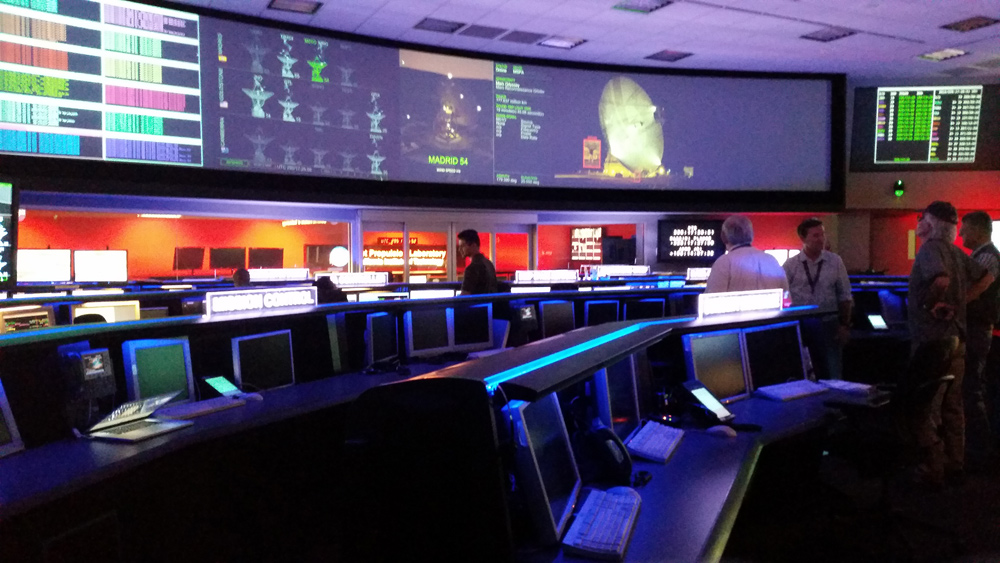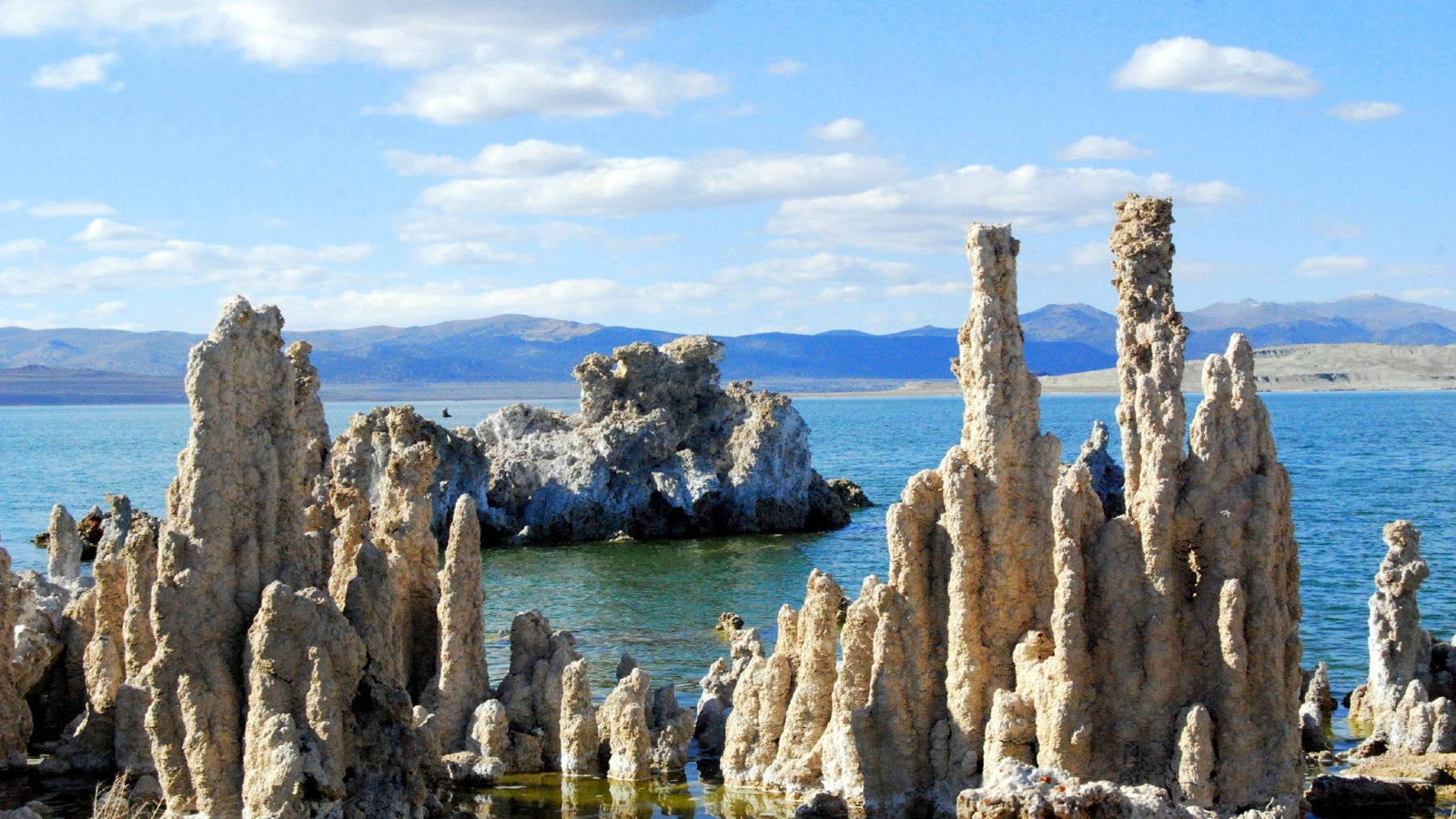NASA's Jet Propulsion Laboratory (JPL): Facts & Information
The Jet Propulsion Laboratory (JPL) was building spacecraft before NASA even existed, and today it's the space agency's go-to center for the robotic exploration of worlds beyond Earth.

JPL leads the $2.5 billion Mars Science Laboratory mission, which dropped the 1-ton Curiosity rover on the Red Planet's surface in 2012. It also is managing the upcoming Mars 2020 rover, which is slated to go to the Red Planet in 2020. The center also ran the Saturn-studying Cassini mission (which ended in 2017), and continues managing the Voyager probes in the outer solar system and interstellar space.
JPL is based in Pasadena, Calif., and is managed for NASA by the California Institute of Technology (Caltech). Here's a brief rundown of the lab, which employs about 5,000 people and has an annual budget of $1.6 billion.
A long history
JPL's roots go back to 1936, when a group of researchers at Caltech's Guggenheim Aeronautical Laboratory performed a series of rocket experiments in a dry canyon wash known as Arroyo Seco. They moved out to the valley after an accidental explosion on campus.
"They weren't going to mess anything up out here," Jia-Rui Cook told Space.com. Cook works with JPL's media relations.
The success of those trials attracted the attention of the United States military, which gave the Caltech team money to develop strap-on rockets to help Army planes take off from short runways — a concept called "jet-assisted takeoff," or JATO. [10 Military Aircraft that Never Made it Past the Test Phase]
In 1943, several of the researchers formed the Aerojet Corporation — which remains in business today — to manufacture JATO motors. That same year, the Caltech team began referring to their research organization as the Jet Propulsion Laboratory.
In the early years, JPL was funded by the U.S. Army to develop missile technology. By 1945, the lab employed nearly 300 people and had begun to launch test vehicles to an altitude of 37 miles (60 kilometers) from White Sands, N.M.
Just two years later, JPL first launched Corporal, a guided missile viewed as an answer to Germany's famous V-2 rocket. Corporal missiles were deployed in the U.S. and Europe from 1954 to 1964.
JPL then branched out, applying the skills gained from its missile efforts to nonmilitary research missions. The lab began developing Explorer 1, the United States' first successful satellite, in November 1957 and launched it to orbit on Jan. 31, 1958.
Before the end of the year, JPL had been transferred from military to civilian jurisdiction. Congress created NASA in October 1958, and the space agency took charge of JPL two months later. [NASA's 10 Greatest Science Missions]
Planetary exploration: The early years
The lab soon began setting its sights beyond Earth orbit. In 1962, for example, JPL's Mariner 2 spacecraft flew by Venus, becoming the first probe ever to observe another planet up close.

Mariner 4 performed a Mars flyby in 1964, and Mariner 9 became the first spacecraft to circle another planet when it settled into orbit around the Red Planet in 1971.
JPL efforts also helped pave the way for NASA's manned Apollo moon missions. In 1964 and 1965, the Ranger 7, 8 and 9 spacecraft took photos of Earth's nearest neighbor before intentionally crashing into the lunar surface. And from 1966 to 1968, Surveyor 1, 3, 5, 6 and 7 made soft landings on the moon.
Mariner 10, launched in 1973, was another pioneering effort. The JPL spacecraft swung by Mercury after getting a boost from Venus — the first time a probe ever employed this planetary "gravity-assist" strategy, which allows robotic explorers to maximize the distance they travel while minimizing fuel use.
Going to Mars
Curiosity and the more advanced Mars 2020 may be the most ambitious and capable rovers ever designed, but they are far from JPL's first Red Planet foray. The lab has helped send a phalanx of robotic explorers to Mars over the last four decades. [History of Robotic Mars Missions (Infographic)]
In 1975, NASA launched the Viking mission, the agency's first attempt to look for life on the Red Planet. Viking delivered two orbiters and two landers to Mars, eventually returning intriguing but equivocal evidence of possible biological activity. JPL built the orbiters and eventually assumed responsibility for management of the mission.
JPL also led the Mars Pathfinder mission, which placed a rover and a lander on the Red Planet in 1997, and Mars Global Surveyor, which studied the planet from orbit from 1997 through 2006. The lab's Mars Odyssey orbiter launched in 2001 and remains operational today.
Further, JPL manages the Mars Exploration Rover mission, which landed the twin rovers Spirit and Opportunity on Mars in January 2004. Spirit stopped communicating with Earth in 2010, but Opportunity is still going strong and has driven more than a marathon's worth of distance on Mars
JPL's Mars Reconnaissance Orbiter launched in 2005 and continues to study the Red Planet from above, providing details about the planet's weather and features. And in 2008, the Phoenix lander confirmed the presence of water ice just below the Martian surface near the planet's north pole. Additionally, the Mars InSight lander is expected to launch in 2018 to study the interior of the Red Planet.
Not all of JPL's Mars efforts have been successful. For instance, contact was lost with Mars Observer in 1993, shortly before it was slated to enter orbit. And both the Mars Climate Orbiter and Mars Polar Lander were lost upon arrival at the Red Planet in late 1999.
"Landing on Mars is hard," Cook said.
That's why missions often rely on existing ideas and hardware from previous trips to the red planet. According to Cook, the upcoming Mars 2020 rover, for instance, will utilize the a spare heat shield from the Curiosity mission.
"If we've done it successfully already, then we'll build on that," she said.
Beyond the Red Planet

JPL has also sent many probes beyond Mars. Two of the most famous are the lab's twin Voyager spacecraft, which launched in 1977 to study Jupiter, Saturn and their moons. The probes achieved their initial goals, then kept on going, checking out Uranus and Neptune on their way toward interstellar space. Voyager 2 entered interstellar space in 2012 and Voyager 1 should reach there in the next few years.
JPL's Galileo probe also studied Jupiter, entering orbit around the solar system's largest planet in 1995 and making observations for the next eight years. Cassini, which launched toward the Saturn system in 1997, sent data and images home until 2017, when the probe was deliberately hurled into Saturn on the off chance it might crash into (and contaminate) an icy moon such as Enceladus. One of Cassini's most famous findings was seeing water spurting in dozens of geysers from the moon's surface.
The lab has also led or participated in missions to study comets and asteroids. One such effort was Stardust, which collected particles from the tail of Comet Wild-2 in 2004 and returned them to Earth.
The JPL-managed Deep Impact spacecraft smashed a projectile into Comet Tempel 1 in 2005, then chased down Comet Hartley 2 for an up-close look in 2010. And JPL's Dawn spacecraft orbited Vesta, the second-largest object in the asteroid belt, before heading off to study the belt's biggest body, the dwarf planet Ceres.
JPL also keeps its eyes on Earth. According to Jason Craig, who works on visualization for JPL, nearly a third of the lab's budget is spent studying our own pale blue dot. Some of the missions are very long running, such as the Topex/Poseidon satellite that provides information about global sea levels; it celebrated its 25th anniversary in 2017. Satellites large and small monitor Earth's atmosphere, oceans, gravity, and temperature as it orbits the sun. They even track "what's on fire around the Earth," Cook said, thanks to the carbon monoxide in the atmosphere. In addition to wildfires, this allows scientists to track the slash-and-burn tactics prevalent in the rainforests of South America and Africa. All of this information is available to the public through a desktop application known as "Eyes on Earth."
"We collect the data and we hand it over," Craig said. "Everything we do is released to the world."

Not just planetary exploration
While JPL is best known for its planetary exploration missions, it has managed or assisted a number of other efforts over the years as well.
For example, the lab manages the Spitzer Space Telescope, which has been scanning the universe in infrared light since its 2003 launch. And JPL's Wide-field Infrared Survey Explorer space telescope, or WISE, found more than 100,000 previously unknown asteroids in the asteroid belt before shutting down in 2011.
JPL also serves as the home of NASA's Near-Earth Objects Program, which coordinates observations of Earth-crossing asteroids and comets.
Further, JPL managed flight project development for the Kepler space telescope, which has spotted thousands of potential alien planets. The lab handed control of Kepler's science operations over to NASA's Ames Research Center in Mountain View, Calif., after Kepler's March 2009 launch. Kepler is running low on fuel and is expected to cease operations in 2018.
JPL also designed, built and operates NASA's Deep Space Network, a system of antenna stations located in California's Mojave Desert, Spain and Australia. The DSN provides tracking for NASA and international missions to deep space, and it helps image planets and asteroids using radar. Data collected from the outskirts of the solar system streams back to the lab in California, leading some JPL folks to jokingly refer to it as "the center of the universe," according to Jim McClure, who manages Mission Control.
The floor of the DSN's mission control testifies to the nickname. A large inset commemorates the cooperation of JPL with NASA and Caltech, proclaiming the site to be the center of the universe.
"We fly our nerd flags extremely high here at JPL," McClure said. "So high we have had four marriage proposals at the center of the universe."
In addition to its main Pasadena site and the three DSN antenna stations around the world, JPL facilities include an observatory at Table Mountain, Calif., and a launch complex at Florida's Cape Canaveral. The lab's current director is Dr. Michael Watkins, who took control in July 2016. [Infographic: NASA Centers' New Mission]
Additional reporting by Space.com contributor Nola Taylor Redd. Follow her tour of JPL here.
Join our Space Forums to keep talking space on the latest missions, night sky and more! And if you have a news tip, correction or comment, let us know at: community@space.com.
Breaking space news, the latest updates on rocket launches, skywatching events and more!

Michael Wall is a Senior Space Writer with Space.com and joined the team in 2010. He primarily covers exoplanets, spaceflight and military space, but has been known to dabble in the space art beat. His book about the search for alien life, "Out There," was published on Nov. 13, 2018. Before becoming a science writer, Michael worked as a herpetologist and wildlife biologist. He has a Ph.D. in evolutionary biology from the University of Sydney, Australia, a bachelor's degree from the University of Arizona, and a graduate certificate in science writing from the University of California, Santa Cruz. To find out what his latest project is, you can follow Michael on Twitter.
